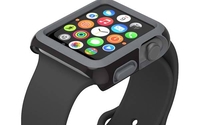 Wearables are getting serious with
more than 100 million projected to hit the market this year.
Wearables are getting serious with
more than 100 million projected to hit the market this year.
A new forecast projects that 110,000 million wearable Internet-connected devices will ship worldwide this year, an increase of 38%
from a year ago.
And by 2020, the number of wearables expected to hit the market is 237 million, according to the latest quarterly wearable device tracker by the International Data Corporation
(IDC).
To give you an idea of the pace of market growth, just in the last quarter of last year, the wearables market grew 127% compared to the same quarter a year earlier, according to an
earlier IDC report.
Smartwatch sales are growing rapidly, although they only will account for a quarter of wearables this year growing to about a third by 2020.
But no matter the
device, watch and wristbands dominate, accounting for 100 million of the units, up from 72 million last year.
advertisement
advertisement
Other connected wearable things, such as clothing, eyewear and hearables, are
expected to account for the other 10 million units this year.
The leading smartwatch operating system is from Apple, closely followed by Android Wear. Here is the projected market share
breakdown of smartwatch operating systems by 2020:
- 38% -- Apple Watch OS
- 35% -- Android Wear
- 10% -- RTOS (Real-Time Operating System)
- 7% -- Tizen
(Linux-based open source operating system)
- 5% -- Android
- 3% -- Linux
- 3% -- Pebble
Of course, there is a potential downside in the large number of devices
getting connected.
Another new study, out of the U.K., found that most consumers worry about their devices being compromised but don’t really know what to do about it.
The
majority (66%) of consumers were concerned about the potential data theft around their connected devices with a third (34%) already experiencing a security or privacy issue in the past.
But it
turns out that most (72%) don’t know how to protect themselves from such risks, according to the study, which comprised a survey of 6,000 U.K. residents conducted by BullGuard.
At least
for the foreseeable future, it looks like the wrist will be the home for much of the consumer-oriented Internet of Things.